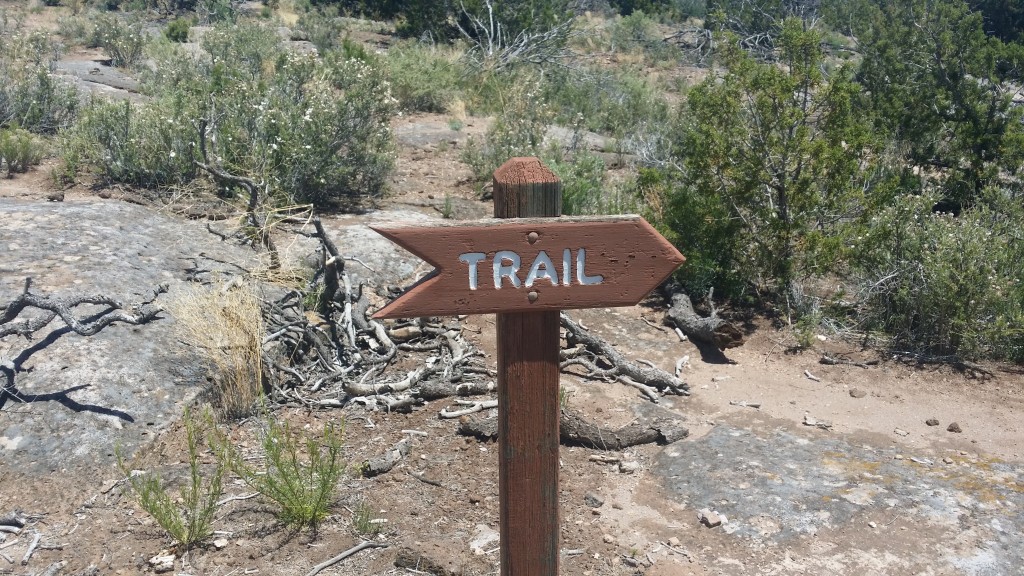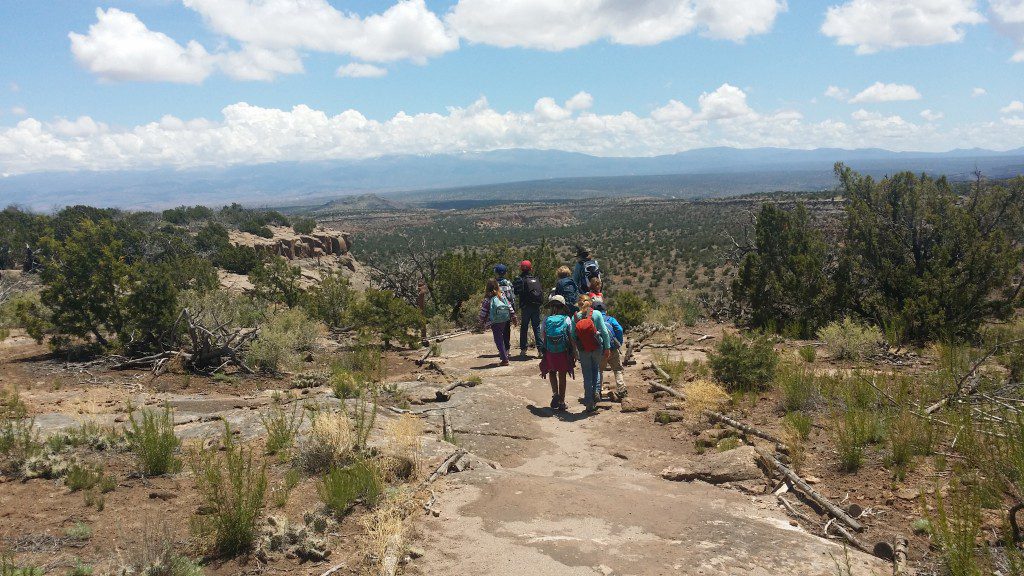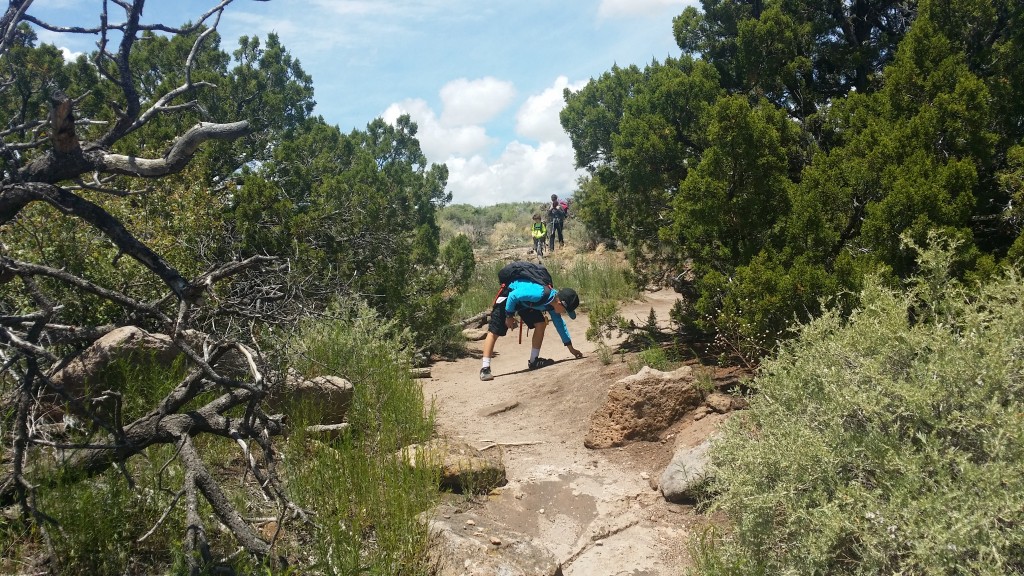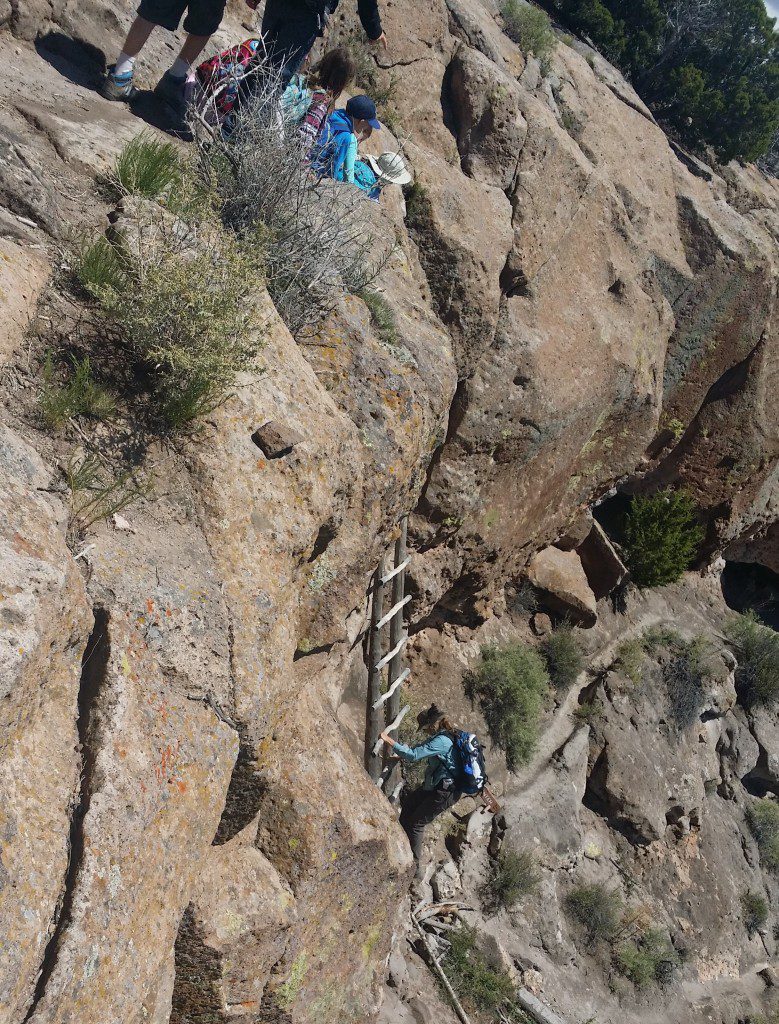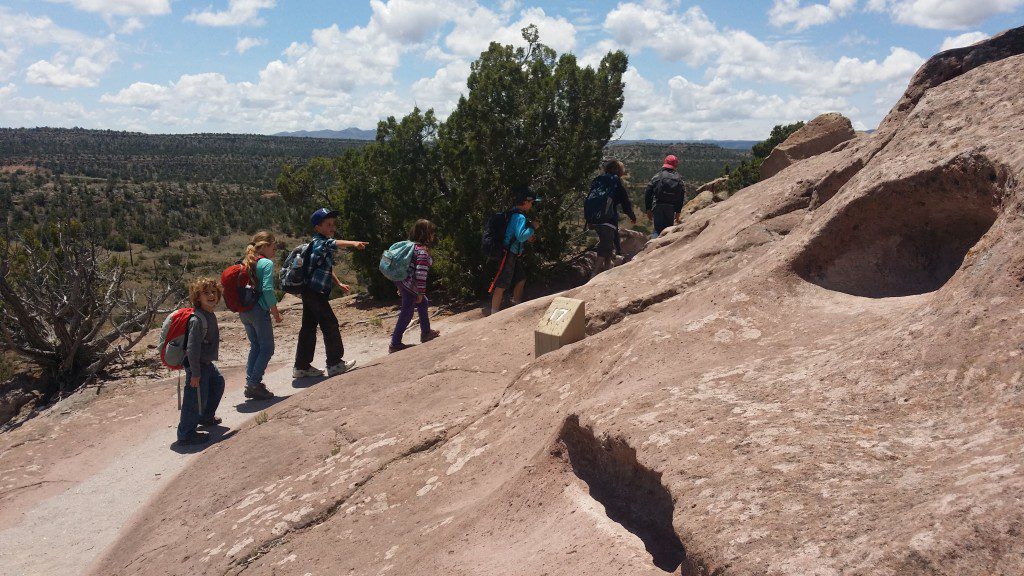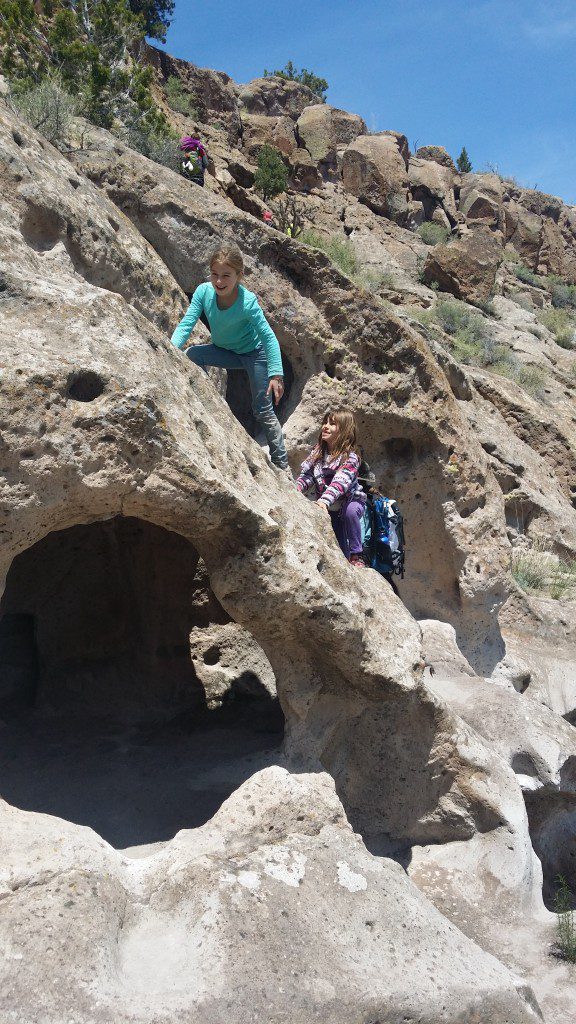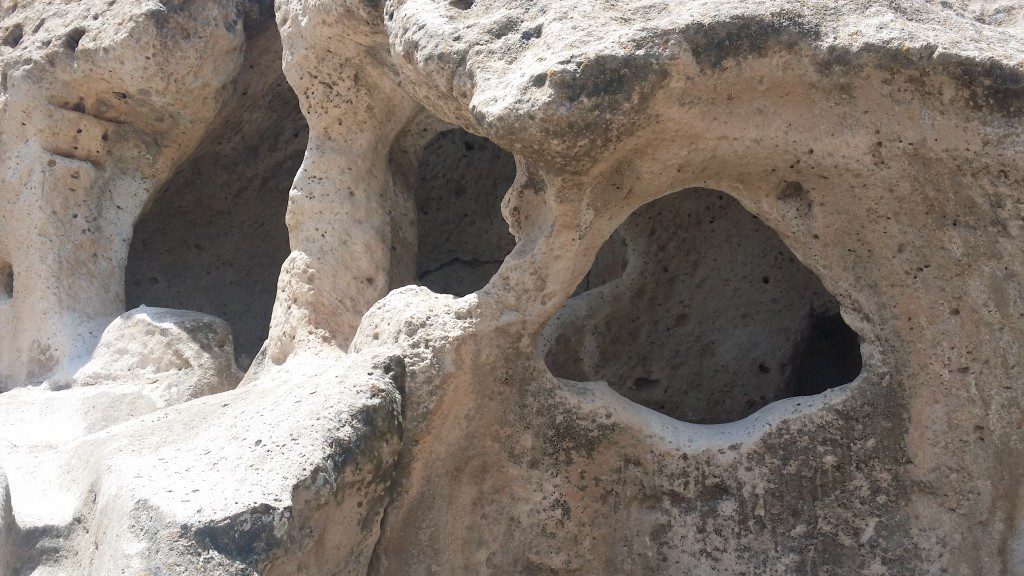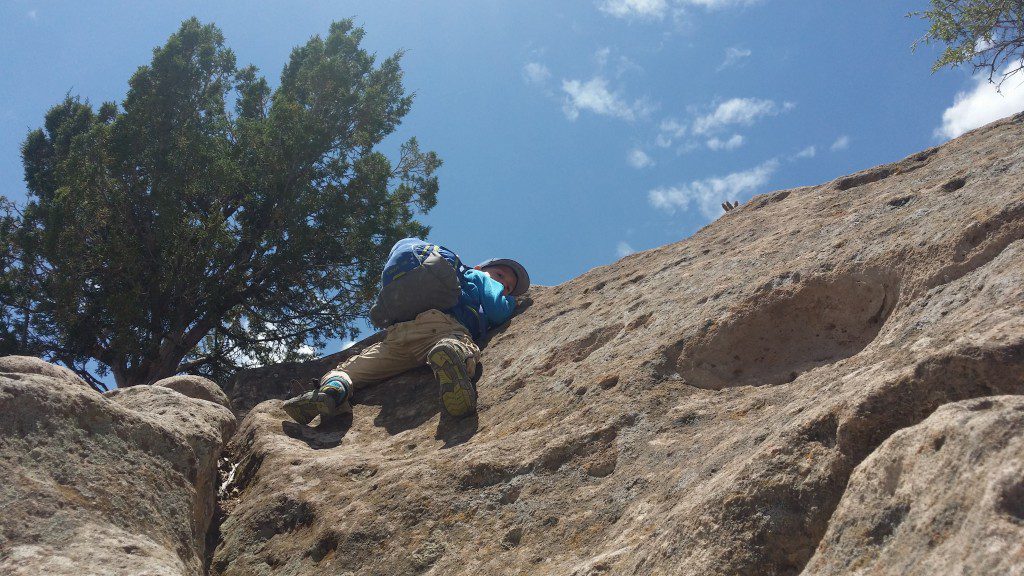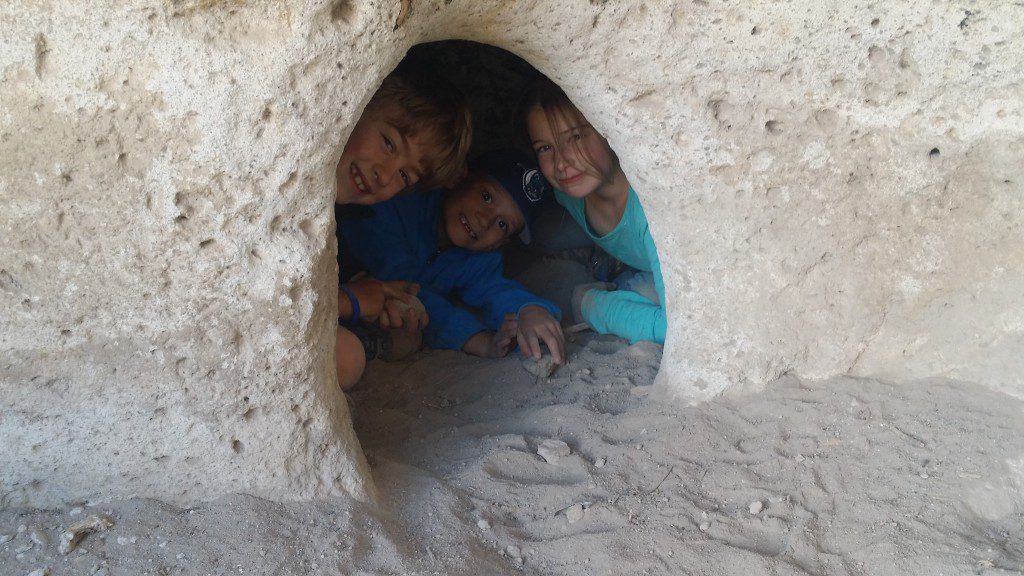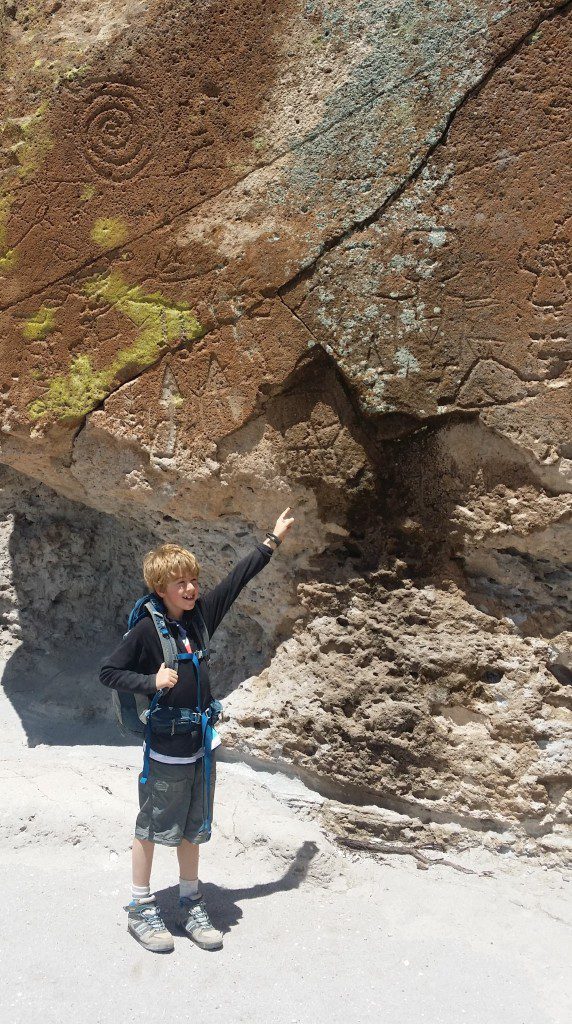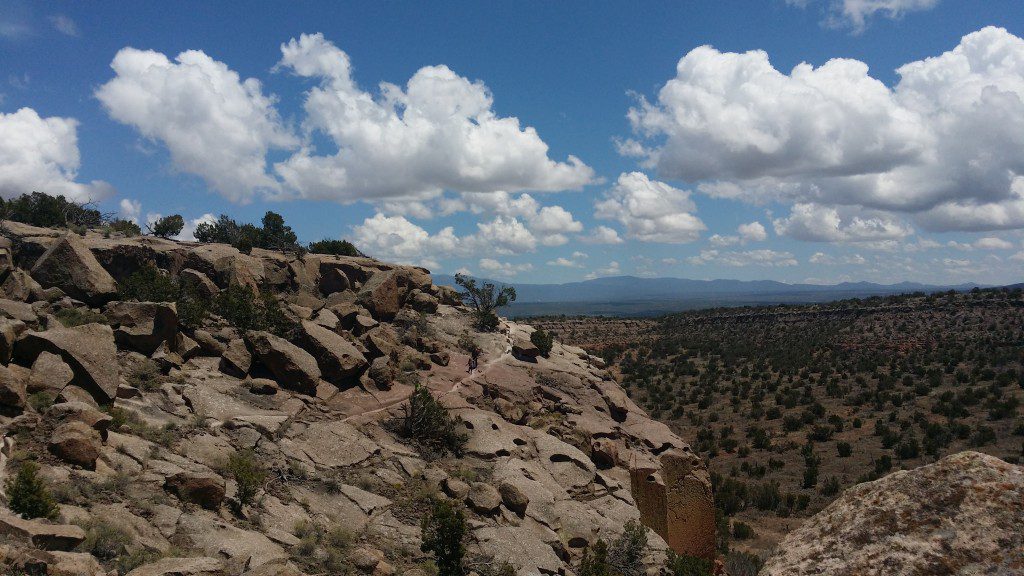Have you ever wondered whose hands drew the first pictures on earth? Have you ever thought about what your life would be like if we didn’t have an alphabet? Each year, children are mesmerized by a story called Communication in Signs, one of Maria Montessori’s five Great Lessons. The tale begins with early human cave paintings and pictographs, emphasizing human’s amazing ability to put their thoughts into forms on rocks, clay, bones, and paper. It takes the children’s imagination on a trip through history, visiting ancient cultures that either created their own system of writing or contributed to the development of the alphabet we use today.
New Mexico offers ample opportunities to walk the ancient footpaths of the Pueblo people who lived here centuries ago. Here, Journey children visit Tsankawi, a detached and unexcavated portion of Bandalier National Monument in search of petroglyphs. Deep grooves in the soft volcanic tuff reveal obvious trails, steps and hand holds from long ago. The children excitedly climb and explore the small caves (cavates) carved by ancient hands. Blackened ceilings ignite their imaginations while shards of pottery call out to them.
This language lesson and outdoor exploration leads the children into many areas of study including the origin of spoken language, structure of language, word study, elements of style, drama, literature, and poetry.

